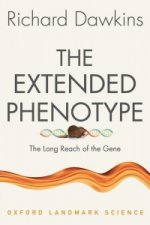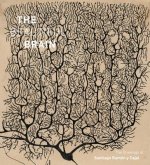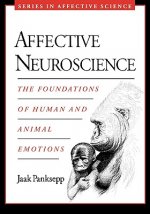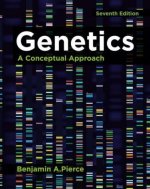
Kód: 10804212
Molecular Biology of Neurofibromatosis Type 1
Autor Meena Upadhyaya
Neurofibromatosis type 1 (NF1) is a common autosomal dominantly inherited, tumour predisposition syndrome affecting 1/3,000-4,000 individuals worldwide. This inherited disorder results from the mutational inactivation of the NF1 g ... celý popis
- Jazyk:
 Angličtina
Angličtina - Vazba: Brožovaná
- Počet stran: 79
Nakladatelství: Morgan & Claypool Publishers, 2014
- Více informací o knize

Mohlo by se vám také líbit
-

Richest Man in Babylon
565 Kč -

Grace
407 Kč -

Hearts Untamed
472 Kč -

Fabrication d'Un Nouveau Billon Blanc, Plus Parfait, En Pieces de 10 Et 5 Sols, Cinq Decimes
401 Kč -

Control
675 Kč -

Arrangements Für 10 Saitige Gitarren
587 Kč
Dárkový poukaz: Radost zaručena
- Darujte poukaz v libovolné hodnotě a my se postaráme o zbytek.
- Poukaz se vztahuje na celou naši nabídku.
- Elektronický poukaz vytisknete z e-mailu a můžete ihned darovat.
- Platnost poukazu je 12 měsíců od data vystavení.
Více informací o knize Molecular Biology of Neurofibromatosis Type 1
Nákupem získáte 185 bodů
 Anotace knihy
Anotace knihy
Neurofibromatosis type 1 (NF1) is a common autosomal dominantly inherited, tumour predisposition syndrome affecting 1/3,000-4,000 individuals worldwide. This inherited disorder results from the mutational inactivation of the NF1 gene on human chromosome 17. The NF1 gene contains 61 exons that give rise to 12kb mRNA encoding neurofibromin. The 327kDa (2,818 amino acid) neurofibromin protein is expressed in most tissues and has a number of alternative isoforms. Neurofibromin is a tumour suppressor protein and down-regulates cellular Ras. Increased active Ras-GTP levels also stimulate the important PI3K/AKT/mTOR signalling pathway that protects cells from apoptosis. The major clinical featues of NF1 include multiple café-au-lait macules, skinfold freckles, iris Lisch nodules, and neurofibromas. The diagnostic criteria for clinical diagnosis have been well established. However, there are a small number of cases in which the diagnosis is not certain. The germline mutation rate for the NF1 gene is 10-fold higher than that observed for most other inherited diseases. Using a combination of different techniques, almost 95% of germline mutations can be detected. To date, only two firm genotype phenotype correlations have been reported. NF1 phenotype exhibits large variations within a family, evidence for modifying loci regulating the expression of an NF1 gene is beginning to emerge. We also are gaining knowledge on the molecular mechanisms associated with the development of different types of tumours. It is encouraging that the results of recent laboratory and clinical research are finally being translated into clinical trials. With the availability of high-throughput technologies, sophisticated animal models, and multi-centre clinical trials, the future for NF1 sufferers is looking optimistic. This book aims to provide an overview of the genetic and clinical aspects of NF1 and its role in both NF1-associated and sporadic tumour development. It emphasizes the recent developments in this field and some of the promising on-going clinical trials.
 Parametry knihy
Parametry knihy
Zařazení knihy Knihy v angličtině Mathematics & science Biology, life sciences Life sciences: general issues
1854 Kč
- Plný název: Molecular Biology of Neurofibromatosis Type 1
- Autor: Meena Upadhyaya
- Jazyk:
 Angličtina
Angličtina - Vazba: Brožovaná
- Počet stran: 79
- EAN: 9781615046447
- ISBN: 9781615046447
- ID: 10804212
- Nakladatelství: Morgan & Claypool Publishers
- Hmotnost: 169 g
- Rozměry: 235 × 187 × 5 mm
- Datum vydání: 28. February 2014
Oblíbené z jiného soudku
-

Stealing Fire
374 Kč -

Brain Rules (Updated and Expanded)
325 Kč -

Book of Beautiful Questions
647 Kč -

The Extended Phenotype
358 Kč -

Evolution
675 Kč -

Sapiens
841 Kč -

Ways of Attending
708 Kč -

New Executive Brain
540 Kč -

The Molecule of More
395 Kč -

Sapiens
358 Kč -

Undoing Project
279 Kč -

Into the Magic Shop
363 Kč -

Brain
316 Kč -

It Was Snowing Butterflies
90 Kč -

Beautiful Brain
938 Kč -

The Selfish Gene
303 Kč -

Power of Habit
338 Kč -

Cosmic Serpent
253 Kč -

Greatest Show on Earth
306 Kč -

Speculations on the Evolution of Human Intelligence
227 Kč -

Homo Deus
488 Kč -

Biology of Belief
445 Kč -

Story Genius
348 Kč -

Descartes' Error
357 Kč -

Life on Earth
677 Kč -

Reaching Down the Rabbit Hole
316 Kč -

Hidden History of the Human Race
345 Kč -

Science of Meditation
306 Kč -

Neuroaffective Picture Book 2
929 Kč -

Head Strong
543 Kč -

Affective Neuroscience
2070 Kč -

Wisdom of Psychopaths
347 Kč -

Genetics
2429 Kč -

Kew Tropical Plant Identification Handbook, The
543 Kč -

The Storytelling Animal
366 Kč -

Brain's Way of Healing
303 Kč -

On the Origin of Species
249 Kč -

Ancestor's Tale
410 Kč -

Manual of Percutaneous Coronary Interventions
2485 Kč -

Incognito
419 Kč -

Incredible Unlikeliness of Being
357 Kč -

Plant Ecology
1854 Kč -

Touch
303 Kč -

Masters of the Planet
392 Kč -

Future Humans
695 Kč -

Secrets of the Skeleton
592 Kč -

Once We All Had Gills
1109 Kč -

Zooarchaeology and Modern Human Origins
2866 Kč -

Tree of Life
1334 Kč
Osobní odběr Praha, Brno a 12903 dalších
Copyright ©2008-24 nejlevnejsi-knihy.cz Všechna práva vyhrazenaSoukromíCookies



 Vrácení do měsíce
Vrácení do měsíce 571 999 099 (8-15.30h)
571 999 099 (8-15.30h)